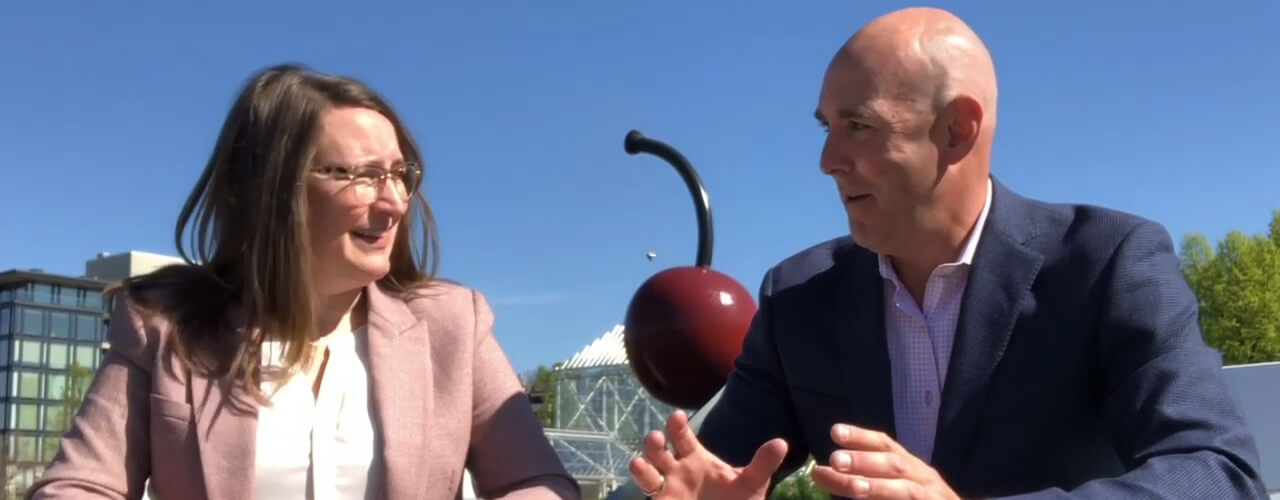Lessons Learned Along the Way – Family Business Succession
Featuring Sara Stern with Family Business Minnesota
Lesson #1 – Family business transition doesn’t have to be a nightmare.
Sara Stern: I think a lot of people come to family succession expecting it to be a nightmare. They should expect that it’s hard. There are hard and complicated decisions, but there is no reason it has to be a nightmare if you take your time, plan ahead and surround yourselves with other leaders (like Allied offers the opportunity to do).
If you have the hard conversations, and a picture of where you’re headed, succession doesn’t have to be a nightmare. There is a place to start and a road to follow. The process can be a fulfilling experience - the opposite of a nightmare for you, your family, your business, your community and the people that work for you.
Lesson #2 – What is it your family business clients most seek or want?
Sara Stern: They are seeking a place to start. A road or path to follow. In so many things in life there isn’t path. For example, if somebody said to you here is where you start in order to be a great parent, you’d jump at that, right?
The beautiful thing is there is a specific place to start with family business succession. There are a handful of questions you can answer that gets you going on the road to really having a successful transition.
Lesson #3 – What gets in the way of your clients getting started with succession planning?
Sara Stern: The normal day-to-day fun and stress of running a family business kind of stuff. It’s not having the time - or the perception that you don’t have the time - to pause, step back, and think about where it is you are trying to go, why you are doing this, and what it is all for.
Lesson #4 – It helps to have some tools…
Kurt: You leverage a couple of unique tools that help you help your family business clients. One is the Traction/EOS model which is a great tool. I have personal experience with that being on the side of the business trying to implement it. It’s great to help get organized and clear with everyone on the same page and instill some accountability. But you also have a unique proprietary succession planning process that you leverage that I think is very interesting.
You have said in the past that succession planning is a hard process and it’s even gotten more complicated. However, you have seemed to come up with a way to simplify that. Share a little bit about that process.
Sara Stern: I’m going to start by giving everyone a tool. Not a lot of people are familiar with a 3-circle model of the family business. The first two circles are Family and Business and the third circle is Ownership.

A lot of people don’t think about ownership and really don’t understand what it means to be an owner in any business, but for sure in a family business with multiple generations. The process that I use completely focuses on ownership. It’s the starting point for succession in my opinion. I ask the owners, whether it’s one owner or two, whether it’s first generation or second, six important questions to help them get started.
Lesson #5 – Six important ownership questions
Sara Stern: The first question is, what are your values as an ownership group?
I ask them to look at the history of the business, and ask, how have they made ownership decisions over time?
Not family decisions and not inside of the business decisions, but ownership decisions. Reality is, they have been following a set of values over time to help them make ownership decisions, they just aren’t conscious about them. I help them look at that and determine these values. That will help guide the owners as they make ownership decisions in the future.
Sara Stern: The second question is, what is the legacy you are trying to build as an owner?
There are two pieces to your legacy. The first one is, why do you stay in this three-circles world, where you are a family, a business, and owners together? Why are you doing this?
If it is because grandpa started this business, and I respect him and want to continue his legacy, I ask people to really look deeper into that. What is it about the legacy? Is it influencing people in your community? Is it manufacturing in the US? What is it about the ownership legacy that is important or exciting to you?
This is an important piece. Once clear, then ask what are you creating today that will be around in 100 years? From there the rest of the questions become very clear.
Sara Stern: The third question, what do you want your ownership to look like in ten years?
Sara Stern: The fourth question, what is your ownership philosophy? There are four parts…
Part 1: What does it take to be an owner?
Do you have to be a certain age? Do you have to lead the business? Do you have to have a certain education? Do you have to buy it? Is it gifted to you? What does it take to be an owner?
Part 2: What does it take to work in the business?
Do you just have to have a last name? Do you have to show up to work? Do you have to do none of the above? Do you have to have a degree? Do you have to work somewhere else first? When you are clear about your values and legacy, your philosophy becomes clear. Otherwise, you just make it up. Typically, people make it up as they go.
Part 3: What do we want out of the business?
Do we want to shove all the profits back into the business or are we looking for dividends? What kind of growth are we looking for?
Part 4: How will we make decisions as owners?
Sometimes it’s just the majority shareholder makes all the decisions, sometimes it’s a consensus sometimes it’s voting. If you have a lot of owners, you may have a family council. Do you have a board? How do you play that and what are the rules of engagement?
Sara Stern: The fifth question is…what’s the plan? How are you going to get to that 10 years from now mark?
Sara: The sixth and last question, what do we need to solve? What are the big ideas we need to pursue for all the rest of that to be true?
LESSON #6 – The Art of the start
Kurt Theriault: This makes logical sense – on paper - to anyone that has been involved in a family business. However, often the hardest thing is the “art of the start”. So how do you help people take the step to get started?
Sara Stern: I often find there is one person, either the current owner or future owner, whose mind got opened by a conversation.
They are the one person who is interested in doing this. I give them and the other owners 90 minutes of my time. I share a couple tools with them and have them start talking about possibilities. From there half of the ownership groups thank me for coming in, tell me they aren’t ready, it’s too soon and too uncomfortable. The other half want to get started and want help from the outside.
Sara Stern is the founder of Family Business Minnesota. You can find out more about Sara’s work, and access complimentary tools at www.fbownership.com. You can also purchase her new book, “Start Here – A Guide for Family Business Succession” at Amazon.com


